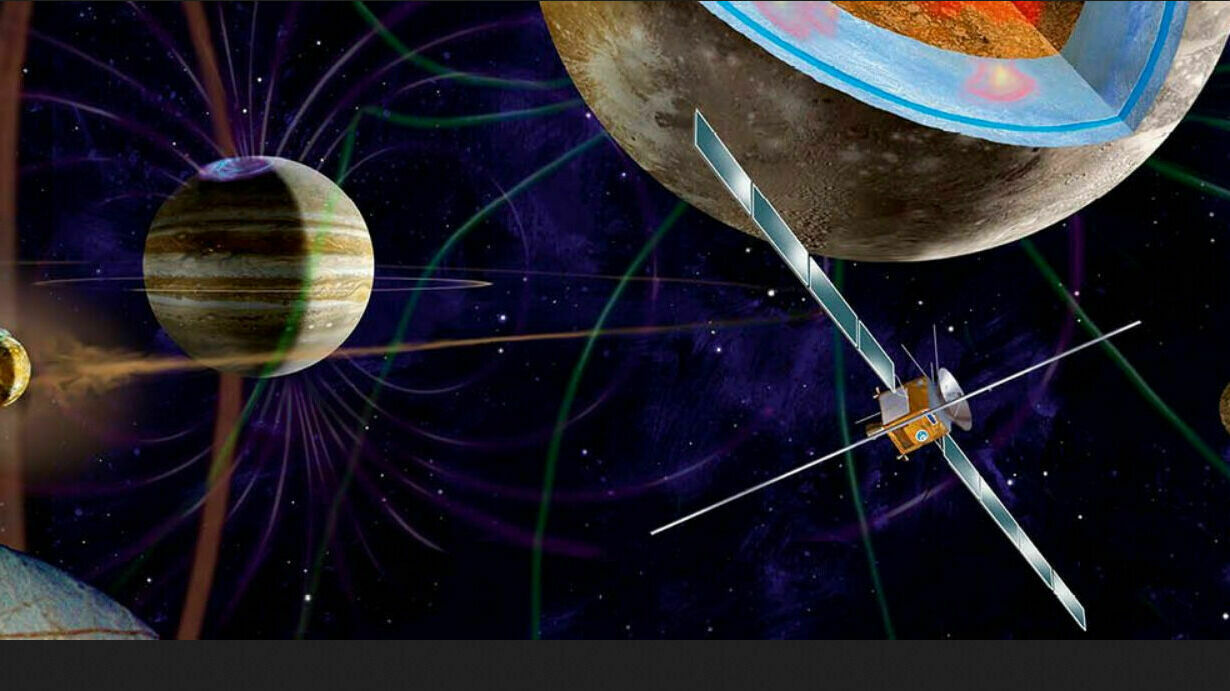Posted 28 декабря 2022, 16:34
Published 28 декабря 2022, 16:34
Modified 28 декабря 2022, 16:59
Updated 28 декабря 2022, 16:59

What will happen to space exploration in 2023
The outgoing year was marked by important steps in space exploration. NASA has launched the Artemis-1 mission, the next stage of which will be the return of man to the moon. The James Webb Space Telescope was launched, thanks to which astronomers received images of previously unseen distant galaxies. The construction of the Chinese Tiangong space Station has been completed. The Conversation website names five missions that may become the most important in 2023.
The ESA spacecraft maps the oceans beneath the surface of Jupiter's moons
In April, the European Space Agency (ESA) plans to launch the Jupiter Icy Moons Explorer (Juice), Europe's first robotic mission to Jupiter.
Juice should make a flight through the Solar System and reach Jupiter in July 2031. The mission program includes flights of large icy satellites of the planet: Europa, Ganymede and Callisto, under the frozen surfaces of which, according to scientists, oceans of water are hidden. Europe, for example, is considered one of the most likely habitats of extraterrestrial life in the Solar System. Juice will be equipped with an ice-penetrating radar that will help map the oceans lying beneath the surface of Jupiter's moons. The launch window is from April 5 to April 25.
SpaceX must launch the most powerful launch vehicle and the largest crewed ship
At the beginning of the year, the first orbital test flight of the superheavy Starship spacecraft, owned by Elon Musk's aerospace company SpaceX, is expected.
Starship is a system consisting of a spacecraft carrying crew and cargo, and a superheavy rocket. The rocket will take the ship to an altitude of about 65 km, after which it will separate and return to Earth. The ship will travel the rest of the way to orbit on its own engines. The launch is expected to be unprecedented in two indicators. It will be the largest spacecraft carrying crews between Earth and destinations in space, and the most powerful launch vehicle in history: it is assumed that it will be able to lift 100 metric tons of cargo into low Earth orbit. The flight was planned for September 2022, but was postponed several times. The new date has not yet been announced, but most likely it will happen in the first months of 2023.
Yusaku Maezawa organizes the first full-fledged tourist launch into deep space
Next year, the project of the Japanese billionaire Yusaku Maezawa dearMoon is planned, during which eight people will go with him on a six-day trip around the Moon and back.
This will be the first real tourist launch into deep space. All crew members are representatives of creative professions: pop star, photographer, choreographer, video blogger, documentary filmmaker ... Maezawa pays for the financing of the flight from his own funds: according to rumors, it will cost him $ 80 million. The Starship spacecraft with a creative team on board should approach the surface of the Moon at a distance of 200 kilometers and circle around it for three days. When exactly the flight will take place has not yet been announced. This is probably unknown to Maezawa himself. His team will be one of the first to travel on Starship, and the dates of the mission will depend on how successful the upcoming Starship trials will be. Previously, only astronauts selected according to strict criteria were sent on long flights into deep space, since such a journey involves extreme risks, both from the point of view of health and from the point of view of technology. The success or failure of the dearMoon mission can make space tourism a trend – or show that we are not ready for it yet.
Soil samples from the asteroid Bennu will arrive on Earth
NASA's Origins Spectral Interpretation Resource Identification Security – Regolith Explorer (OSIRIS-REx) mission is due to end in September, during which an automatic interplanetary station (AMS) will deliver soil samples taken on the near-Earth asteroid Bennu to Earth.
AMC was launched in 2016 and is now on its way home with a kilogram of samples. If everything goes smoothly, the capsule will separate from the spacecraft, enter the Earth's atmosphere and make a soft landing with a parachute in the deserts of Utah on September 24.
The Bennu asteroid is a diamond-shaped body with a diameter of half a kilometer, which, according to scientists, broke off from a much larger asteroid in the first 10 million years of the Solar System's existence. It is known that in ancient times there was water on Bennu, and now the asteroid is rich in precious metals, including gold and platinum.
India intends to put 3D printing of space rockets on stream
Elon Musk's SpaceX is the most famous, but far from the only private company engaged in launching spacecraft.
There are others. So, Skyroot Aerospace from India successfully launched the Vikram-S rocket in November this year, and next year it is going to launch a satellite. The goal of the Indians is to put 3D printing of rockets on stream. If they could be printed in a few days, it would help reduce the cost of launching scientific missions, and therefore accelerate the pace of space research.